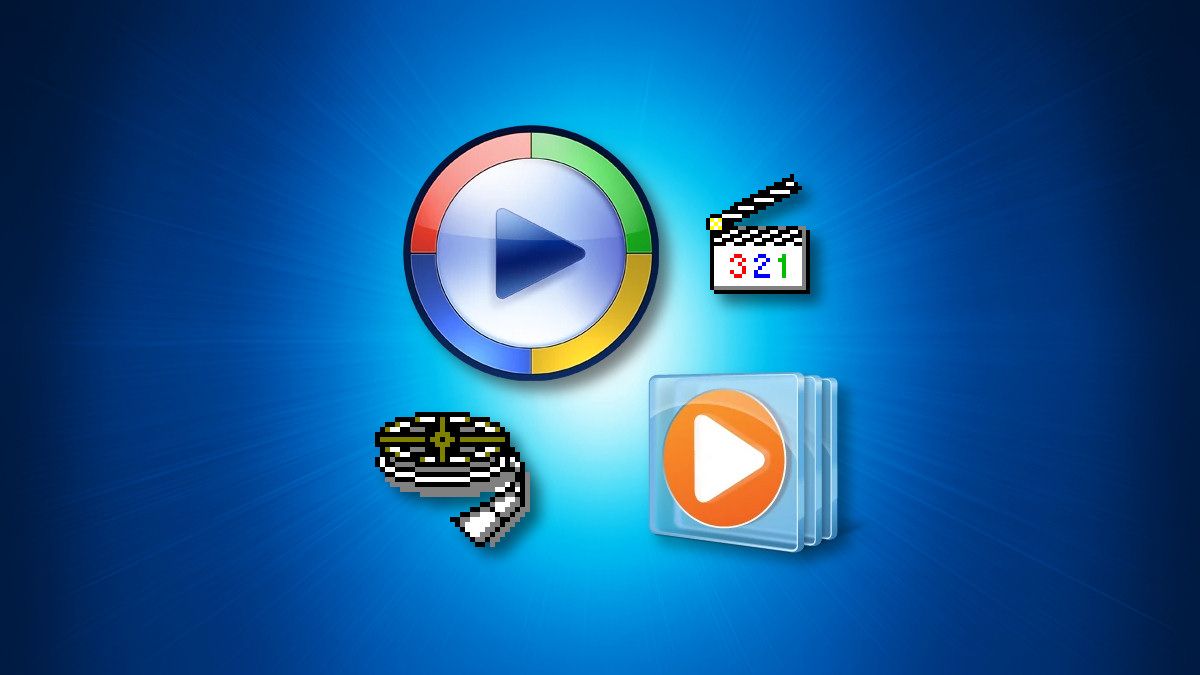Gandalf_The_Grey
Level 82
Thread author
Verified
Honorary Member
Top Poster
Content Creator
Well-known
- Apr 24, 2016
- 7,189
30 years ago, Microsoft introduced the first version of Windows Media Player—then just called “Media Player”—as part of “Windows 3.0 with Multimedia Extensions.” Since then, it’s morphed and changed dramatically over time. Here’s a look at its history.
Bringing Audio and Video to Windows
Early versions of Windows didn’t support audio and video playback. Computers at the time typically weren’t powerful enough: Audio and video data took up a lot of storage space, relatively speaking, and advanced codecs that compressed high-quality audio and video had not been invented yet. Also, in many cases, the early PC hardware itself did not support high-quality audio or video playback.
Around the turn of the 1990s, multimedia PCs with enhanced graphics cards and sound cards that could play digitized sound samples and wavetable audio became more common. In that atmosphere, Microsoft decided to update its Windows 3.0 operating environment to support multimedia recording and playback. The company released Windows 3.0 with Multimedia Extensions on October 20, 1991.
For the first time, Windows included sound and video capabilities. Windows 3.0 with Multimedia Extnesions could play MIDI files, record and play back digitized audio, play music from CDs, play sounds on startup and error events, and more. Some of those capabilities came thanks to a new app called Media Player. At first, Media Player could only play .MMM animation files—commonly called MultiMedia Movie Format (RIFF RMMP)—out of the box. However, it could be extended to play other formats, and in future versions of Windows, Media Player’s abilities grew.
The story of Windows Media Player is long, circuitous, and hard to grasp in its entirety. Over time, Media Player absorbed (and branched off into) other media technologies at Microsoft. For example, in 1992, Microsoft released Video for Windows, which allowed digital video playback in the form of AVI files on Windows for the first time. In 1996, Microsoft released ActivePlayer (later called “DirectShow”) for playing media files and NetShow Player for streaming video. Eventually, all these technologies—and many more—would get rolled into the Windows Media Player brand.
As Windows Media Player grew in complexity, it added support for visualizations, skinning, CD playback and ripping, DRM-protected audio and video (that could be sold through the Internet), and media library management support. Over the years, Windows Media Player has appeared on many versions of Windows, the Mac, Windows CE and PocketPC devices, and even on Sun’s Solaris operating system.
A Few Notable Moments in Windows Media Player History
Decoding the complete history of Windows Media Player is like navigating a maze full of conflicting and confusing version numbers, abandoned Microsoft technologies, and the slow aggregation of software bloat over time. It’s even hard to exactly pinpoint when “Media Player” became “Windows Media Player” — perhaps around version 5.0. Here are just a handful of notable events in the Media Player timeline.
The Crazy Skins
- 1990 (October 20): Media Player debuts as part of Windows 3.0 with Multimedia Extensions. It’s initially limited to playing animation files.
- 1992 (November): Thanks to Video for Windows (an Apple QuickTime competitor), Media Player can play AVI video files for the first time. It can also play MIDI files.
- 1996: Microsoft Releases NetShow Player, which steams video from the Internet. It competes with RealPlayer and will later become part of Windows Media Player.
- 1996 (May): Microsoft releases ActiveMovie, which allows viewing or hearing media streams and new audio/video codecs. The technology would eventually be folded into Windows Media Player.
- 1998 (October): Microsoft releases Windows Media Player 6.0, which removes MP3 support (introduced in version 5) and proves unpopular at first.
- 2000 (July 17): Microsoft releases Windows Media Player 7, which supports skins, visualizations, burning songs to CD, and more.
- 2004 (September 16): Microsoft launches the MSN Music store, which sells DRM-protected music in WMA format, playable in Windows Media Player.
- 2006: Microsoft releases Zune desktop software, which is a modified version of Windows Media Player. It’s used to sync songs with Microsoft’s Zune music players.
- 2021 (October 5): Windows Media Player v12 (a legacy version) ships with Windows 11.
Released in 2000, Windows Media Player 7 supported changing the player’s interface for the first time—similar to WinAmp, which preceded it. To do so, you could download files known as “skins” that could dramatically alter the look and layout of Windows Media Player’s controls.
Skins soon became a way for people to further personalize their Windows experience, and people frequently used skins that featured their favorite media properties, actors, models, and musical groups. There were also wild futuristic or alien-like skins that seemed more fashionable than practical, but people loved them anyway.
Windows Media Player Lives On
The multimedia playback landscape is somewhat confusing in Windows 11 today. The OS ships with Groove Music, an audio player and library similar to iTunes that traces its origins back to Zune Music in 2006. Windows 11 also includes the Movies & TV app, which allows rentals and purchases of streaming video content, itself descended from the Xbox Video service.
Windows Media Player hasn’t been significantly updated since 2012, but it lives on in Windows 11. There are rumors that Microsoft is preparing a major update or replacement for the application based on an accidental leak of a new app called simply “Media Player.” Until we know more details, the traditional Windows Media Player is still with us. Happy Birthday, Windows Media Player!

Multimedia Mania: Windows Media Player Turns 30
Three decades of the constant (and sometimes confusing) companion that lives on in every Windows release.

